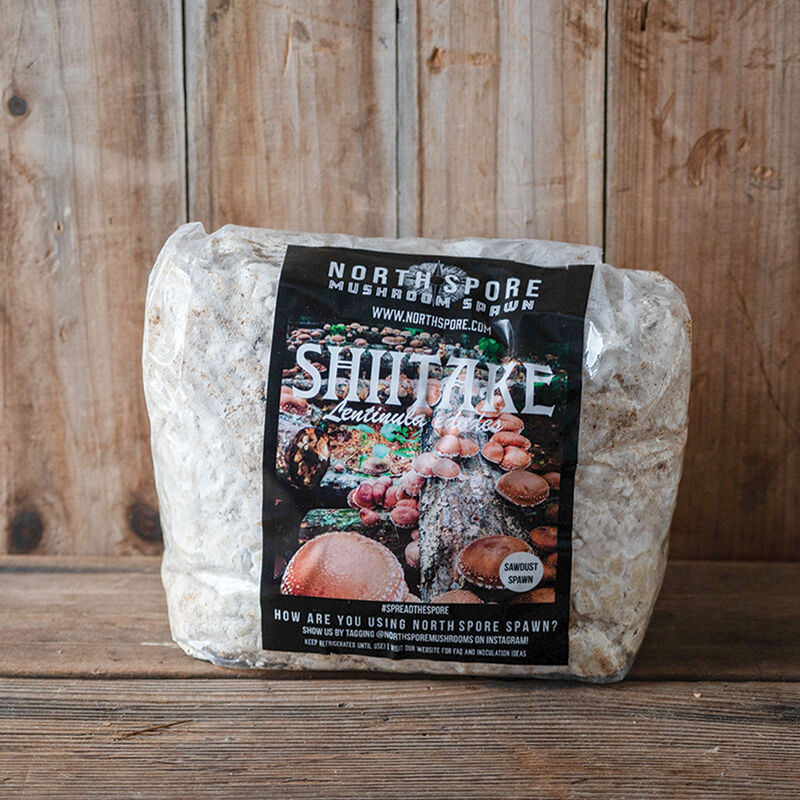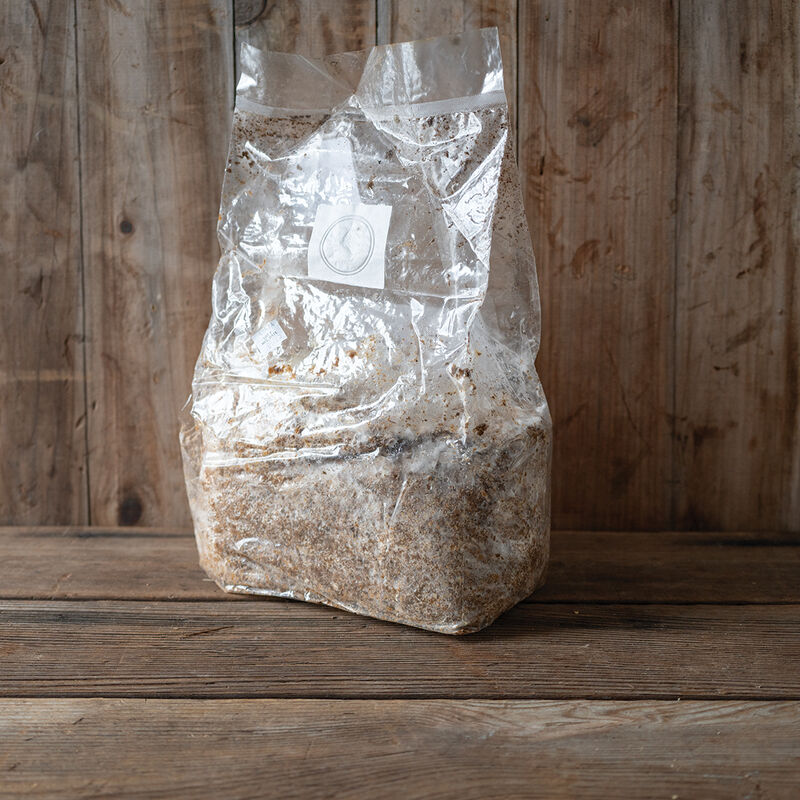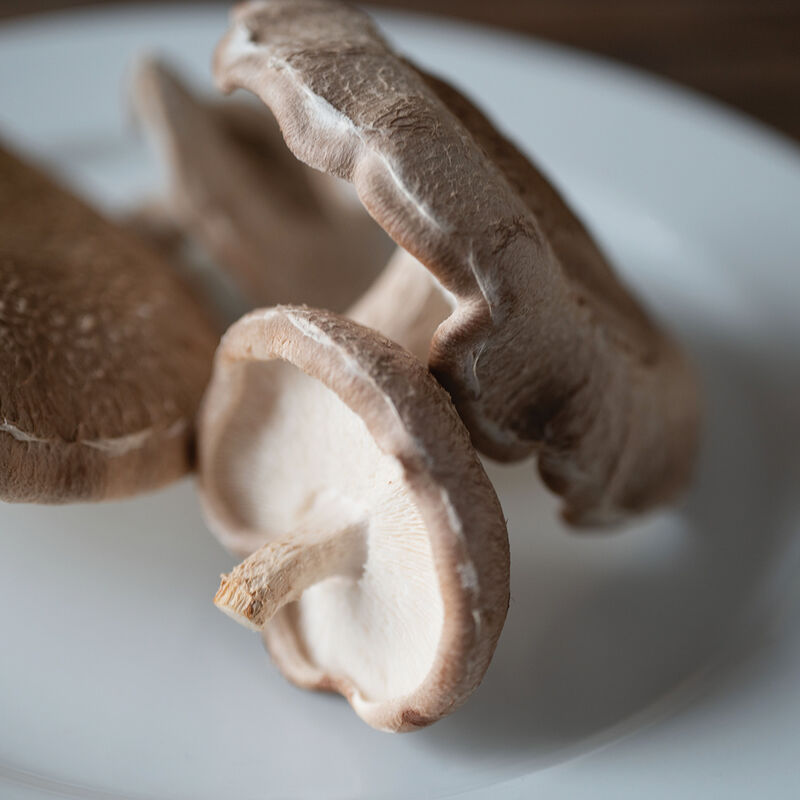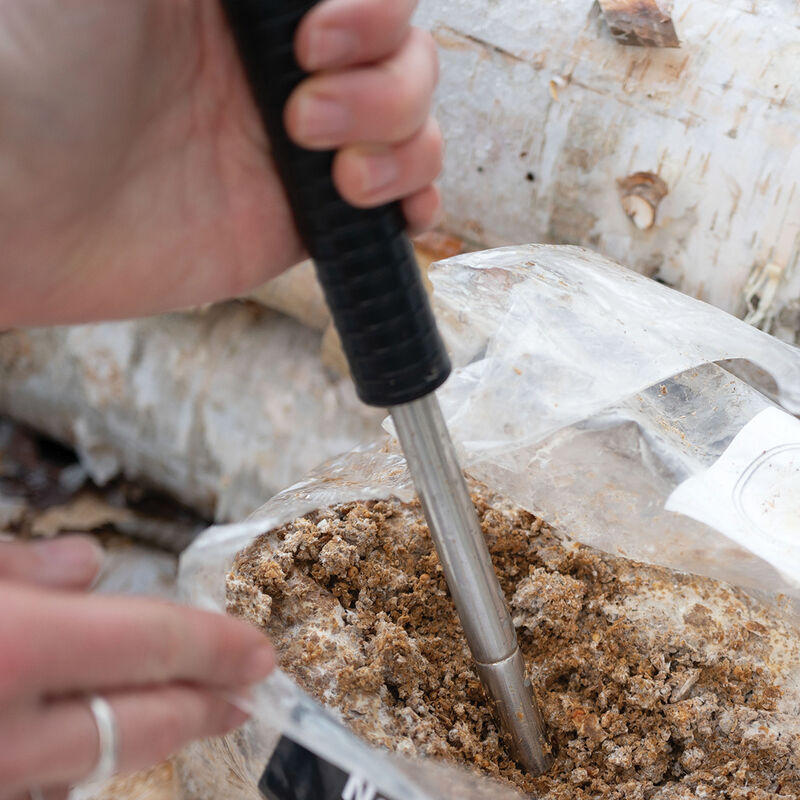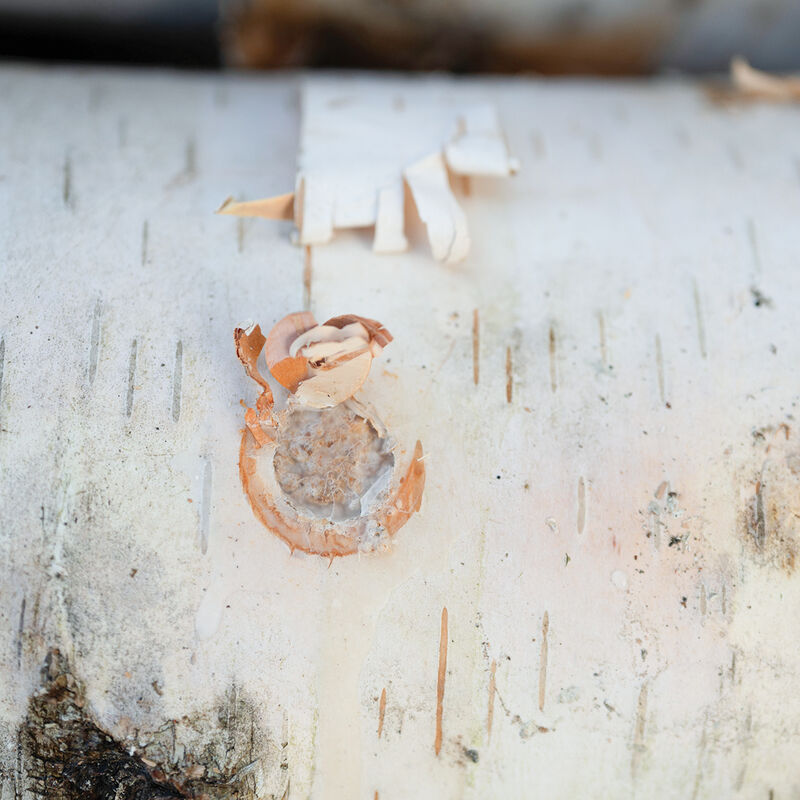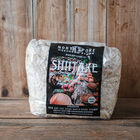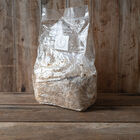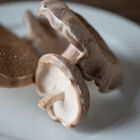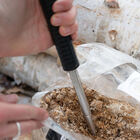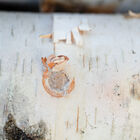Shiitake Sawdust Spawn Organic Mushrooms
Shiitake Sawdust Spawn Organic Mushrooms
Nutritious and medicinal.
Originating in East Asia, Shiitake strains have been selected for log production for hundreds of years and are therefore adaptable producers. They are particularly well-suited for dependable monthly flushes when force-fruiting. Known for their rich, savory, buttery flavor profile, these medium-to-large, brown, umbrella-shaped caps produce generous flushes. Colonization Rate: Colonizing quickly, 9–12 months, Shiitake make for an excellent choice for those who are beginners to mushroom growing.Optimal Growing Conditions: Fruiting temperatures ranging from 55–70°F (13–21°C). Ideal wood species include Alder, Beech, Hophornbeam, Hornbeam, Hard Maple, Oak, and Sweetgum. Alternatively, other suitable species like Basswood, Birch, Chestnut, and more can be utilized. See our chart: Suitability of Tree Species for Growing Mushrooms on Logs for more information.Usage Recommendation: Shiitake sawdust spawn is best suitable for log projects. For optimal results, sawdust spawn is best utilized in larger projects involving 10 or more logs.NOTE: This product is not a standalone mushroom grow kit. To induce fruiting, Shiitake sawdust spawn should be used for log inoculation.Bag Weight: 5.5 lb. USDA Certified Organic.
- This product does not ship to Canada.
- This product does not ship to the following countries: United Arab Emirates, Austria, Australia, Barbados, Belgium, Bulgaria, Bermuda, Bahamas, Switzerland, Cyprus, Czech Republic, Germany, Denmark, Estonia, Spain, Finland, France, United Kingdom, Greece, Hong Kong, Croatia, Hungary, Ireland, Iceland, Italy, Japan, Republic of Korea, Kuwait, Cayman Islands, Lithuania, Luxembourg, Latvia, Malta, Netherlands, Norway, New Zealand, Oman, Poland, Portugal, Qatar, Romania, Saudi Arabia, Sweden, Singapore, Slovenia, Slovakia, San Marino, Thailand, Trinidad and Tobago, Taiwan, Ukraine.
- This product does not ship to the following states and jurisdictions: HI.
Mushroom sawdust spawn ships from March through May according to destination and climate.
CULTURE:
Use Sawdust spawn to grow Shiitake mushrooms on logs, stumps, or pillars. Growing on logs or pillars (also known as "totems") are common methods for commercial production. The pillar method is good for beginners because it needs no special equipment. Mushrooms require ample moisture. Choose a location for your production that is easy to access, monitor, and is at least partially shaded year-round. Easy access to a water source may also be beneficial. Please note that mushroom production in different climates may require altered practices, some options for which are detailed below.SPAWN STORAGE: Remove spawn bags from shipping box promptly. Untuck bags to expose the filter patch and increase air flow. If mushroom fruiting bodies have already developed on the filter patch, carefully remove them without causing damage to the filter and bag. Mushroom growth begins from mycelium (a vegetative structure made up of whitish fibers). In sawdust spawn bags, this can appear as a fuzzy growth resembling mold, but not to worry; it is healthy growth. If spawn needs to be stored prior to inoculation, refrigerate for up to 6 months, but fresh spawn will have the best chance of success. Do not open the bag prior to the day of inoculation as it will significantly heighten the risk of contamination. DAYS TO MATURITY: Logs will take 6–12 months to fruit, and pillars much faster at 3–6 months. Time to fruiting is always subject to variable environmental conditions, but it can also be affected by substrate type or tree species and the ratio of spawn to substrate. Fruiting happens only once mycelium has fully established (colonized) in logs. Logs with a larger diameter will take longer to colonize than those with a smaller diameter.TREE SELECTION: Some tree species are better suited to shiitake. Oak, alder, beech, hophornbeam, hornbeam, hard maple, and sweetgum are ideal, although other species can yield well, too. See our chart: Suitability of Tree Species for Growing Mushrooms on Logs for more information. Healthy trees with intact bark can be harvested at any time of year except in the spring between bud swell and full leaf-out when the tree's energy is supporting developing leaves. The ideal time is in the month prior to bud swell.LOG INOCULATION:
For production on logs, cut trees of at least 3" diameter to desired length. Logs should be inoculated within a week or two of cutting unless they can be stored in a way that keeps them below freezing and hydrated, e.g., covered in snow during northern winters. Using a 12 mm bit, drill holes of 1" depth every 4–6" in rows 2–3" apart, staggered in a diamond pattern down the length of the log. Break up the sawdust spawn. Use a log inoculation tool by jabbing the end into the spawn a few times to load it, then lining the end up with a hole in the log. Depress the thumb piece to insert spawn into the hole, ensuring the top is flush with or slightly below the surface of the log. Repeat for the remaining inoculation holes. Using daubers or a paint brush, seal plugged holes with melted wax. This protects the log both from drying out and potential contamination. If growing in a dry climate, consider also sealing the cut ends of the logs with wax.PILLAR INOCULATION: For pillar production, cut trees of a larger diameter into at least 2 lengths of 6–18" and at least one 2" long to serve as a cap. Logs should be inoculated within a week or two of cutting unless they can be stored in a way that keeps them below freezing and hydrated, e.g., covered in snow during northern winters. Lay a piece of cardboard on the ground and add a 1" layer of spawn in a circle roughly the same diameter as the logs. Place a 6–18" piece on top of the spawn. On the surface of the log piece, add another 1" layer of sawdust spawn and stand another log piece on that. Add a final 1" layer of sawdust spawn and cap with a 2" piece. The number of log pieces and therefore height of a pillar is limited only by the structural integrity of the arrangement.STUMP GROWING:
Sawdust spawn can be used to inoculate freshly cut stumps of a suitable species. This method has the potential to yield mushrooms for a significantly longer time than logs. To inoculate stumps, follow instructions below for inoculating logs with these additional considerations: girdle the stump by removing the outer bark in a ring around the base to prevent suckers from growing; in the inoculation step, also drill holes in the cut surface of the stump. COLONIZATION: Maintaining moisture levels is paramount during the time between inoculation and fruiting, where mycelium grows, but no fruiting bodies are visible. Allow this process to happen in an area out of direct sunlight. If producing on pillars or in containers, consider covering with a tarp, a layer of straw mulch, or similar material to keep moisture in. Remove cover when mushrooms are ready to begin fruiting, indicated by pins, baby mushrooms, beginning to form on the surface. If producing on logs, keep the logs close to the ground but not in direct contact with it, and stack densely to help mitigate moisture loss due to excessive airflow. CONSIDERATIONS FOR FRUITING ON LOGS: When logs are fully colonized, sometimes indicated by the presence of mycelium on the cut ends, they should be rearranged in a way that increases aeration and harvester access. Fruiting will naturally occur the first time. After the initial fruiting, if more regular harvests are desired, logs can be "force fruited" by soaking them in cold water for no more than 24 hours. Allow about 8 weeks between flushes if using this method. HARVEST: Maturing mushrooms grow very quickly and should be checked at least once a day when nearing maturity. To harvest, twist or cut the mushrooms off the log at their base. Harvest before caps begin to flatten out and edges are still curved under. Overmature mushrooms will have a shorter shelf life and are more easily damaged in handling. Fading or discoloration, as well as firmness, are indicators that the mushrooms may not be ideal for consumption, as their flavor and texture can degrade with age.PRODUCTION WINDOW: When growing mushrooms using any method, the number of flushes produced will depend on log density and species and environmental conditions. When growing on logs, the larger the diameter, the longer the production window. Due to their diameter, stumps and pillars have the potential to produce for much longer than logs. In northern climates, a rule of thumb is that the log's diameter in inches equals the number of years it is likely to produce. This timeline will be shorter in mild areas with a more continuous growing season.PESTS AND DISEASE: Mold can grow on sawdust spawn damaged in transit or on harvested mushrooms that have been stored for a long time. Do not consume moldy mushrooms. To combat slug damage, diatomaceous earth can be spread around the base of logs. Mammals can be a minor pest but often will not consume all your yield. Mammals can be deterred by using row cover such as Agribon-15. It is better to harvest mushrooms when they are younger as they will usually have less pest damage.CAUTION: Ensure mushrooms are cooked thoroughly before consumption. If eating a species for the first time, start with a small amount to test for allergies. Logs or substrate for mushrooms grown outside have a higher risk of being colonized by other fungal species. Make sure to confidently identify mushroom species prior to consumption, as they may be a fruiting body of a local species.Johnny's is committed to your success, every step of the way.
We want you, our customer, to be 100% satisfied with all of our seeds, tools, and supplies.
If anything you purchase from us proves unsatisfactory, we will either replace the item or refund the purchase price.


